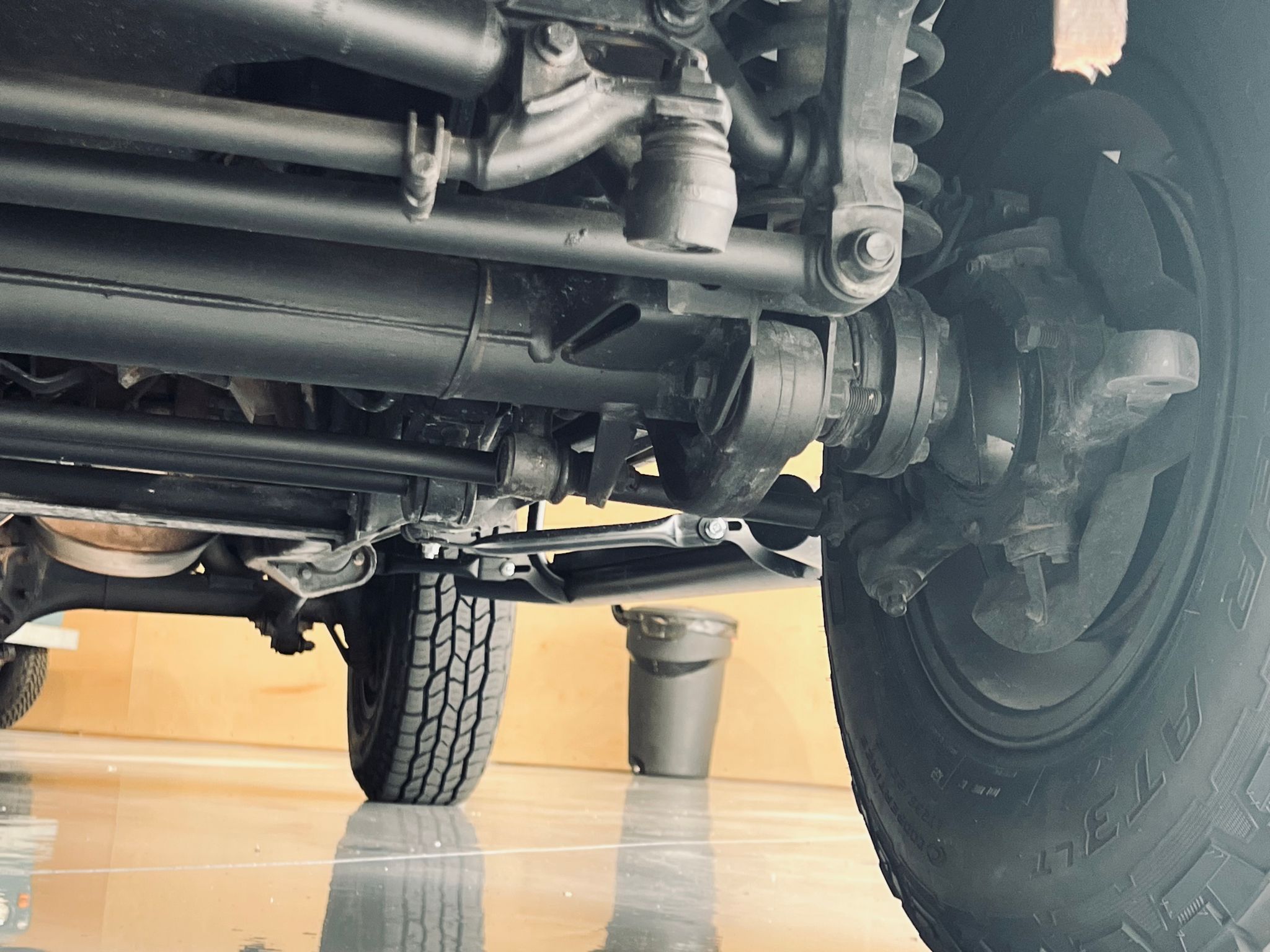
Blog Post - Dec 23 2024
How Do I Vet a Defender?
Purchasing a Defender, especially used ones from Eastern Europe and the Middle East, requires a keen eye for detail and awareness of specific potential issues.
1. Transmission and Transfer Case:
One of the key components to inspect in a Land Rover Defender is the transmission and transfer case. Defenders are known for their robust 4WD system, but this also means the transfer case can experience significant wear. Look for signs of oil leaks, unusual noises, or difficulty shifting gears. Regular maintenance records can indicate if the transfer case has been properly serviced. The M82 gearbox, commonly found in TDCi Defenders, has its own set of potential issues. One common problem is the wear between the splined parts of the output shaft, which can lead to clunking noises and eventually a loss of drive. Regular maintenance and checking for oil leaks around the gearbox can help identify this issue early.
The rear differential is another crucial area to examine. Defenders are built for rugged terrain, and the rear differential often takes the brunt of this. Check for any signs of oil leaks around the differential housing and listen for any grinding or whining noises during a test drive. These could be indicators of worn bearings or gears that may need replacement.
3. Engine Health:
The heart of any Defender is its engine. Defenders from Eastern Europe and the Middle East often come with diesel engines, which are known for their longevity when maintained correctly. Look for excessive smoke on startup, check the oil level and quality, and listen for any unusual engine noises. A well-maintained engine should run smoothly and without significant vibrations.
4. Rust and Corrosion:
Given that Defenders are often used in off-road and harsh conditions, rust can be a common issue. Inspect the chassis, floor pans, and bulkhead for any signs of rust or corrosion. Dry climates, like those in certain parts of the Middle East, can be advantageous as they reduce the likelihood of rust, but it’s still essential to perform a thorough inspection.
5. Suspension and Steering:
The suspension system and steering components of a Defender can take a beating over time. Test the vehicle’s steering for any excessive play or stiffness and listen for any unusual noises from the suspension while driving. Replacing worn suspension components can be costly, so it’s crucial to ensure they are in good condition.
6. Service History:
A comprehensive service history can provide valuable insights into how well the Defender has been maintained. Look for records of regular oil changes, timing belt replacements, and any major repairs. A detailed service history can also highlight any recurring issues with the vehicle.
7. Exchange Rates and Pricing:
When importing Defenders from Eastern Europe or the Middle East, be mindful of the current exchange rates. Favorable exchange rates can significantly reduce the overall cost of the vehicle. Additionally, consider the cost of shipping and any import taxes or fees that may apply.
In conclusion, purchasing a Land Rover Defender requires careful consideration of various factors. By thoroughly inspecting the transmission, transfer case, rear differential, engine, and other components, and paying attention to the service history and current exchange rates, you can find a reliable and rugged Defender that will serve you well on all your adventures.